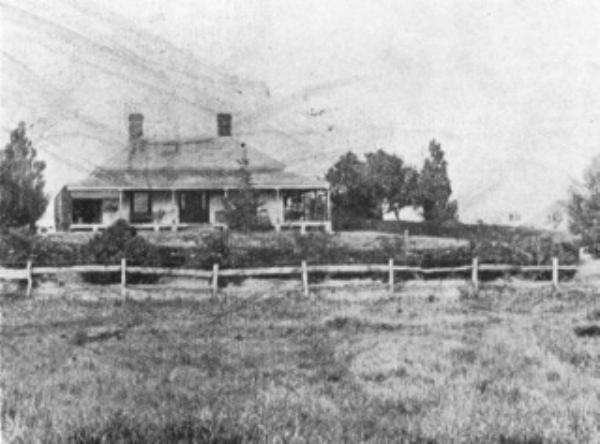
Stanthorpe-based Robert MacMaurice has an eye for local history and reserach skills to match, and he has agreed to share the fruits of his labour with Southern Free Times readers with occassional contributions.
This, his third piece, is on Warwick wine pioneer Jacob Kircher (1828-1903).
It is something of a wonder to me that there is not a booming wine industry in the immediate surrounds of Warwick.
Considering the successes of wine makers such as Jacob Kircher, David Mauch, William Spreadborough, Conrad Roemer, Frederick Reimer, and others from the 1860s until the early 20th century when the industry fizzled out, there was proof enough of success there. So why not today too?
To look at the story of Jacob Kircher is enough to illustrate why.
Jacob Phillip Kircher and his wife Elizabeth Rosina Kircher arrived in Australia from Germany about 1854 and later bought 25 acres of land at Sandy Creek, 11 kilometres north-west of Warwick.
They called their property Assmanshausen after a famous pinot noir wine growing area on the Rhine river in Germany.
Jacob’s brother Michael left Germany about the same time but he decided to settle in the United States of America.
Jacob’s sister Mrs Elizabeth Keim also emigrated to Australia about 1858 and settled at Mountside, Rosenthal, Warwick.
While working to establish Assmanshausen, Jacob and Elizabeth both worked on Canning Downs and Rosenthal Stations.
Jacob and Elizabeth remained childless during their lives, but they built a substantial four bedroom house, which was completed in 1880. This house is there today.
An early description of this house is that it was eight rooms attached by covered way kitchen, dining room, pantry and four bedrooms, all exceedingly well furnished.
It was 12 metres x 12 metres in size, on construction.
Ultimately they had three other cottages on the property. Presumably one of these cottages was their original dwelling and later became used for workers on the property.
It appears that the original property of 25 acres was later expanded to 90 acres.
At first about five acres of land were planted with vines, from about 1864, including verdeilho, muscadine, salvina, black Spanish and Mataro (I’ve used contemporary spellings and names in this list).
Mr Kircher made about 3500 gallons of wine per year (about 13,000 litres).
This was later increased to 10 acres of vineyard, with a yield of about 5000 gallons annually (about 20,000 litres).
The first record of agricultural show awards that I could find for Jacob was at the 1871 Agricultural and Horticultural Society of Eastern Downs in Warwick.
At that show, Jacob won the award for the best red wine, second prize for white wine and another award for best brandy.
At this show the Brisbane Courier reports that although there were a number of bottles exhibited, within an hour of judging being completed “not a drop was left” of his very superior wines.
From this time onwards Jacob Kircher was a prolific entrant of his wines at the Warwick show, various other Queensland regional shows, the Brisbane show, Melbourne Show, Sydney show, and London. His award list is prolific. During the 1880s at the Warwick Show it would be reported that Mr Kircher was inevitably the winner in all of the wine sections.
For that reason it appears that by the late 1880s Mr Kircher stopped competitive involvement in the shows and simply offered his wine for display only.
Some other awards include the following – Mackay prize medal, 1880; Sydney International Exhibition, prize medal (highly commended),1880; Brisbane Exhibition, prize medal,1878; Brisbane Exhibition, prize medal,1889; Brisbane Exhibition prize medal,1891; Colonial and Indian Exhibition (London), prize medal, 1886; Maryborough Exhibition, first prize, 1891; Centennial Exhibition, Melbourne, second order of merit,1888; Queensland International Exhibition, certificate of merit and gold medal; also at Downs exhibitions, many years in succession.
Jacob and Elizabeth tried to sell their winery on two occasions.
The first was in 1883 so that they could visit Germany.
The second was in 1902 because Jacob and Mary wished to retire.
In 1902, Jacob was 72 years of age, and with no children the decision was understandable. Unfortunately on each occasion a sale did not eventuate, but fortunately a nephew, Michael Kircher (junior) arrived from the United States about this time to take over the running of the winery.
Michael Kircher’s (junior) arrival was very fortunate because Jacob died the following year on the 30 April 1903, aged 75 years.
Such was the esteem that he was held that flags on businesses were flown at half mast and windows shuttered.
Elizabeth died on 17 October 1912 at the age of 80 years.
Michael Kircher then continued wine making under the Assmanshausen label, but appears to have sold the business to Hippolyte Serisier in 1915. All winery activities appear to have ceased by the 1940s.
With such a track record as demonstrated by Jacob and Elizabeth Kircher it’s a wonder that someone isn’t restarting the same wine making excellence that was originally proven.






